4 Modern Dance
Learning Objectives
- Explain the similarities and differences between ballet and modern dance
- Identify key techniques and prominent figures in modern dance history
- Understand the history of Western performance dance and summarize major events in the course of its development
Dance is the hidden language of the soul.
—Martha Graham
What Is Modern Dance?
In the early twentieth century, choreographers broke away from the strict traditions of ballet to develop dance as varied and rich as the American melting pot. Choreographers drew upon the styles of many cultures to create a new dance form as diverse as the citizens and expressive of the independence of the American spirit. Black dancers and choreographers explored their African and Caribbean roots and shaped their own form of expressive modern dance. Others sought new movement to depict the human condition. Inevitably, dances were shared, merged, and reimagined. No matter the case, early pioneers of modern dance explored new ways to express themselves in more natural and free form while conveying the spirit of their times.
Modern Dance Characteristics
Modern dance technique is unlike ballet’s codified set of movements used worldwide. Modern dance styles are individualized and, for the most part, named after the person who developed them; for instance, José Limón created Limón Technique. Although modern dance techniques vary, movement concepts are embedded throughout techniques, sharing overarching principles. Let’s take a look at the movement concepts in modern dance.
Dynamic Alignment and Flexibility
All dancers use dynamic alignment. However, in modern dance, emphasis is given to the core along with the pelvis, which is the center from which all movement originates. The core keeps the dancer grounded and stable. Modern dancers also use free or unrestrained movements of the torso that allow for flexibility in all directions.
Watch This
Graham Technique with dancers demonstrating contractions. The torso is in a concave shape created by the core contracting (abdominals); as a result, the pelvis “tucks under,” and the chest reacts by rounding forward.
Gravity
In modern dance, gravity is accepted; it acts in a partnership with the body, utilizing the dancer’s weight paired with momentum.
Watch This
An example of the Limón Technique called fall and recovery that uses the body’s weight with momentum to surrender into gravity. The dancer is demonstrating arm swings, known as release swings. In this action, the dancer begins with the body in a vertical position and the arms swing in any direction. The dancer allows the momentum from the swing to propel the body in the direction of the arm, giving in to gravity.
The Tanz Theater Münster company dancers interact with the floor. They can quickly move between floor work and standing movement.
Breath
The use of breath is a prominent component of modern dance. Dancers do not always attempt to hide their breathing. The inhalation and expiration of breath provide a natural physical rhythm that assists in executing movement.
Bare Feet, Flexed Feet, and Parallel Feet
Modern dance is often performed barefoot. Many exercises utilize the feet in a parallel position. Unlike traditional ballet, modern dance can use a flexed foot instead of a pointed foot.
Improvisation
Improvisation is the practice of unplanned movement. Many choreographers use improvisation as the basis for generating movement ideas for choreography. Through active investigation, choreographers select and further develop the movements explored from their improvisation to consider how they can be applied in their dance concept.
Watch This
The dancer improvises movements that include floor work and standing movement
The Pioneers: First and Second Generations
Historical Context
Modern dance appeared in Germany and the United States in the early 20th century. In the late 19th century, the second Industrial Revolution brought significant changes. The rise of people who lived and worked in cities, mainly middle-class or white-collar workers, lived less active lifestyles, resulting in the task of public health officials to prevent the spread of diseases caused by sedentary lifestyles. Emphasis on the benefits of maintaining a regular exercise regimen, such as dance, gymnastics, and sports, was highly praised. European theorists Delsarte and Dalcroze introduced methods for understanding human movement that were presented to colleges as “aesthetic dance.” These theorists made an impression on emerging modern dancers as they provided new ways to uncover the expressive qualities of the body by responding to internal sensations with greater freedom in movement possibilities.
Loie Fuller (1862–1928)
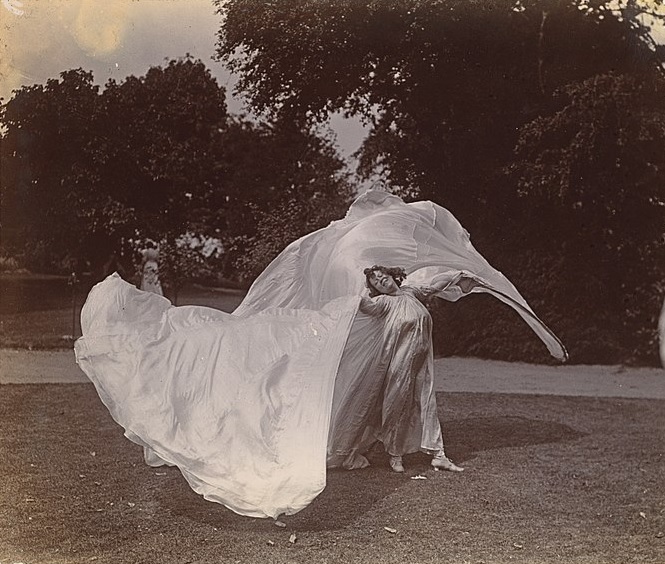
Loie Fuller was a former actress and skirt dancer, a popular dance form in Europe and America, mainly found in burlesque and vaudeville. Fuller is known for her dramatic manipulation of fabrics and lighting designs, creating visual effects such as butterfly wings and fire images. She made these effects by shining light onto her voluminous silk costumes. Loie also experimented with electrical lighting, colored gels, and projections.
Watch This
Fuller debuted as a dancer in Serpentine Dance.
Isadora Duncan (1877–1927)
Isadora Duncan rejected her early training in ballet technique, feeling the movement and costumes were restrictive and lacked personal expression. Instead, she explored more natural movements, such as walking, running, skipping, and jumping. Instead of ballet attire, she emulated the Greeks when she wore tunics, danced barefoot, and performed dances about nature. It gave her movement a sense of freedom and abandonment.
Historically, modern dance has been tied to cultural forces that reflect society. Duncan’s dances expressed the human condition, especially women’s rights. She traveled throughout America and eventually settled in Europe, where she founded her school. Duncan trained dancers and called them “Isadorables.”
Watch This
Duncan perform outdoors.
“Denishawn”
Ruth St. Denis (1879–1968)
Ruth St. Denis became fascinated with cultures worldwide when she saw an advertisement for Egyptian Deities cigarettes. The image of the goddess on the cigarettes inspired her dances honoring goddesses and deities based on her impressions of Indian, Egyptian, Spanish, and Javanese dance forms that weren’t culturally accurate. Instead, they were a reflection of her aesthetics.
Watch This
Denis’s East Indian Nautch Dance inspired by the dance practiced by the nautch girls of India.
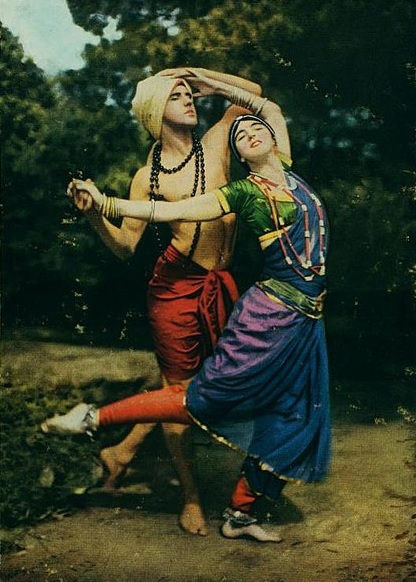
Ruth St. Denis married Ted Shawn; this also began a creative partnership. Together they founded the Denishawn school, creating a diverse curriculum that included ballet, Asian dances, and dance history. They encouraged dancers to connect their dancing bodies to their minds and spirits. Through their school emerged the first generation of modern dancers.
Ruth St. Denis and Ted Shawn parted ways. St. Denis turned her attention to religion and continued teaching South Asian dance forms. Ted Shawn went on to found Jacob’s Pillow in Massachusetts, the nation’s oldest dance festival.
Ted Shawn (1891–1972)
Ted Shawn formed an all-male dance company called Ted Shawn and His Men Dancers, hoping to make modern dance a respected profession for male dancers.
Watch This
Kinetic Molpai is a dance work in 12 parts; it features Ted’s all-male company who form a chorus. A solitary man, the leader, joins them sporadically. Fun fact: Shawn recruited athletes from Springfield College that had no experience in dance and trained them.
First Generation: Discovering Personal Voices
Dancers from the Denishawn school began to branch out as they grew restless with the company’s artistic vision, which focused on exotic themes that proved to be more so entertainment on the vaudeville circuit. Instead, the first-generation dancers wanted to express their creative voices and push the art form’s boundaries, resulting in various codified modern techniques.
Martha Graham (1894–1991)

Martha Graham studied dance at Denishawn but left to form her own company and develop her own technique. She believed that dance should show the struggle and pain that comes with life. She developed “contract and release,” a technique that shows movement initiating from the center of the body meant to embody conflict. This technique involves percussively tightening the body’s core muscles (centered on the lower abdominals and pelvis), followed by a release of tension (the spine lengthens to return to an elongated neutral posture). This technique utilizes breath to support the movement; the dancer begins with an inhale, then an exhale, allowing the body to contract, lastly followed by an inhale to release and return the body in vertical/neutral alignment.
Graham’s repertoire included dances based on Americana, such as Frontier and Appalachian Spring; she also created dances based on Greek myths as in Night Journey, and emotional dances.
Watch This
Lamentation is a signature solo performed by Graham. Graham embodies grief as she contorts her body within the stretchy fabric.
Humphrey-Weidman: Doris Humphrey (1895–1958) and Charles Weidman (1901–1975)
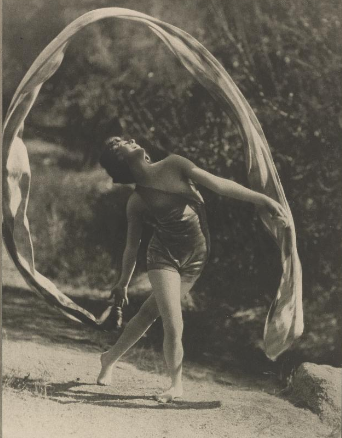
Doris Humphrey & Charles Weidman were former Denishawn students and had a creative partnership and together founded the Humphrey-Weidman company. In collaboration with Weidman, Humphrey created a movement technique based on the body’s reaction to gravity and weight called “fall and recovery.” Humphrey believed the body constantly moves in between the “arc between two deaths,” in a successive pattern responding to gravity.
Watch This
Weidman discuss the concept behind “fall and recovery.”
Lester Horton (1906–1953)
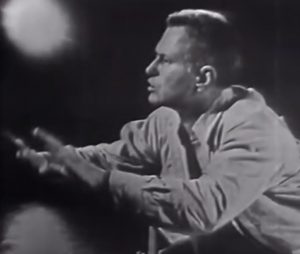
Lester Horton became interested in dance when he saw Native Americans doing indigenous dances. He is most renowned for his technique, called the Horton Technique. This technique embeds strength-building and flexibility principles through fortification exercises (set exercises designed to increase technical skills underpinned with anatomy principles).
Horton also had a company that is credited with founding the first racially integrated dance company in America. His choreography drew inspiration from Native American and African dance forms.
Watch This
Students perform the Horton Technique, working on a flat back series that aim to strengthen and stretch the legs, core, and back.
(Osborne) Hemsley Winfield (1907–1934)
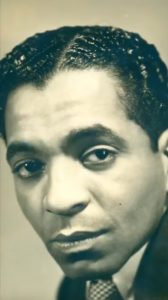
(Osborne) Hemsley Winfield was an African American modern dancer who sought ways to create equitable opportunities for Black dancers. Winfield was inspired by the Harlem Renaissance, a cultural movement that brought African American artists to the forefront as changemakers. In 1931, he co-founded the Bronze Ballet Plastique with the help of Edna Guy, later to be renamed The New Negro Art Theatre Dance Group, which was the first African American modern dance company in the United States. Winfield also established a dance school to provide dance instruction. After Winfield passed away, the New Negro Art Theatre Dance Group dissolved due to a lack of financial support.
Edna Guy (1907–1983)
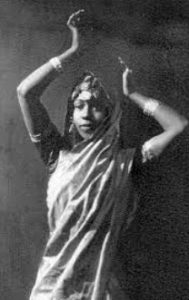
In 1924, Edna Guy was the first African American to study with Denishawn. However, due to the prevalent racial segregation, she was only able to perform for in-house recitals. She later co-founded the New Negro Art Theatre Dance Group alongside Hemsley Winfield. In 1937, Guy and Allison Burroughs staged Negro Dance Evening, highlighting African diaspora dances.
Second Generation: Expanding the Horizons of Modern Dance
The second-generation modern dancers either continued following their predecessors’ work or went in a different direction by creating new dance techniques, styles, and unorthodox choreographic approaches.
José Limón (1908–1972)
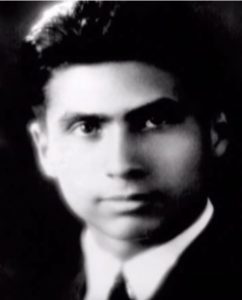
Fig. 8 José Limón from “José Limón Bio” YouTube. Used under fair useJosé Limón, originally from Mexico, danced with Doris Humphrey and Charles Weidman. Eventually, Limón would form his own company and ask his mentor, Humphrey, to be the artistic director. Limón expanded on Humphrey’s “fall and recover” technique and emphasized fluid, sequential movement, and the use of breath as the origin and facilitator for movement as a way to approach organic movement. Limón’s legacy is still alive today. His company continues to perform, dancing the repertory of Limón along with new works from artists.
Watch This
There Is a Time, based on the historic poem from the Bible, “Ecclesiastes.” This dance contains universal themes describing the human experience.
Katherine Dunham (1909–2006)
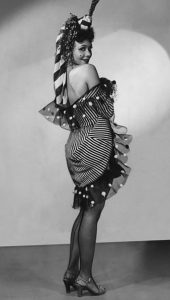
Katherine Dunham was a dancer and trained anthropologist who studied the dances of Haiti and other Caribbean islands. She performed and choreographed for Broadway musicals, movies, and concerts with the company. Dunham developed her technique that drew on principles of the African dance movement, called the Dunham Technique. Dunham sought to create dances that represented her African American heritage. Her work extended outside of modern dance, where she choreographed for Hollywood films. She founded a school of dance in New York City in the mid-1940s.
Watch This
Katherine Dunham’s Carnival of Rhythm, 1941.
Students participate in Dunham Technique. Dunham Technique utilizes classical lines, free movement of the torso that utilizes isolations and undulations, paired with a dynamic range of tempos and rhythmical styles.
L’Ag’Ya. This was Dunham’s signature piece, a story-based folk ballet set in Martinique that combines many dance styles.
Pearl Primus (1919–1994)
Pearl Primus was a trained anthropologist. She secured funding to study dance abroad in Africa and the Caribbean. Primus became a strong voice of African American dance by addressing racism in the United States. One of her most noted works is “Strange Fruit,” based on the poem by Lewis Allan about the lynching of Black people. In 1979, she and her husband established the Pearl Primus Dance Language Institute, which centered classes in various African dance styles. Primus also founded her company, “Earth Theatre,” which toured nationally.

Watch This
Pearl Primus performing solo tabanka teach
Talley Beatty (1918–1995)
Talley Beatty is a Louisiana native born in Shreveport. He was initially a dancer and student of Katherine Dunham and appeared in Broadway shows and films. In 1952, he established his company, which toured in the United States and Europe with a program called “Tropicana,” featuring African and Latin American dance styles. Beatty’s choreography centered on themes of African American life. Renowned dance companies, like the Alvin Ailey American Dance Theater and Dance Theatre of Harlem, have restaged his works.
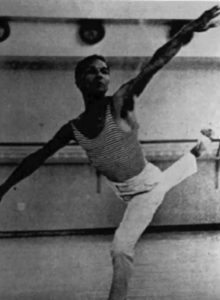
Watch This
In this video, former ADF scholarship student and Alvin Ailey American Dance Theater member Hope Boykin and choreographer and dancer Duane Cyrus speak about their pivotal experiences working with Mr. Beatty on his classic piece Road of the Phoebe Snow (1959).
Donald McKayle (1930–2018)
Donald McKayle was one of the pioneering African American modern dancers to focus on socially conscious works speaking to the experience of Black people in the United States. During the span of his career, McKayle choreographed several masterworks, including “Rainbow Round My Shoulder,” exposing the harsh working conditions of imprisoned Black men set to chain-gang songs. For his tireless contributions, he holds honorable mentions as “one of America’s irreplaceable dance treasures” from the Dance Heritage Coalition.

Watch This
This dance is a staging from the Labanotation score.
Alvin Ailey (1931–1989)
Alvin Ailey is another important second generation dance artist. He studied with Lestor Horton, Katherine Dunham, and Martha Graham. His independent career began after the death of his mentor, Lester Horton. In 1958, he formed the Alvin Ailey American Dance Theater, based in New York. Ailey became an influential voice that brought awareness to the inequalities faced by African Americans. Ailey was dedicated to highlighting and preserving the African American experience by drawing inspiration from his heritage, including spirituals, blues, and jazz.

Watch This
“Sinner Man,” an excerpt from Revelations. Ailey used Lester Horton’s technique in many of his dances.
Ailey sought out other African American choreographers to set dances for his company. In the video below, you will see Wayne McGregor’s Chroma, Ronald K. Brown’s Grace, and Robert Battle’s Takademe. It also has Alvin Ailey’s masterpiece Revelations.
Watch This
Ailey choreographed myriad works. His work Revelations is an American classic. He received many honors in his career for his work in the arts and in civil rights, including the Presidential Medal of Freedom.
Watch This
By turns muscular and lyrical, “The River” is a sweeping full-company work that suggests tumbling rapids and meandering streams on a journey to the sea.
Erick Hawkins (1909–1994)
Erick Hawkins initially studied at the School of American Ballet, eventually meeting Martha Graham. Hawkins was the first man invited to perform with Graham’s company. Hawkins created a dance technique that integrated kinesiology principles coupled with what would be later known as somatic studies that connect the body, mind, and soul. He was interested in the body’s natural movements and was inspired by Zen principles, Native Americans, and the beliefs of Isadora Duncan.

Watch This
“Plains Daybreak,” inspired by Native American dances and stories.
Paul Taylor (1930–2018)
Paul Taylor danced with Graham’s company for several years. In 1959, he formed the Paul Taylor Dance Company. His choreographic works in modern dance ranged from abstract to satire themes. Eventually, Paul Taylor found his niche in classical modern training with remnants of ballet or a lyrical dance style underpinning the movement. His piece Esplanade has choreography couched in pedestrian movements (plain, everyday movements like walking, skipping, running). You may remember seeing a sample of this in Chapter 2, “Elements of Dance.”
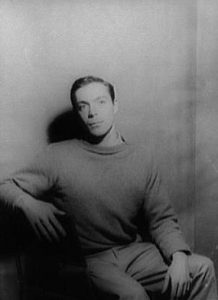
Watch This
Taylor’s Airs.
Merce Cunningham (1919–2009)
Merce Cunningham initially danced with Martha Graham; however, he left to follow his own artistic vision. He formed a creative collaboration with his life partner, John Cage. They experimented with avant-garde ideas that emphasized that dance could be independent of music and narrative or could be a separate entity. Cunningham developed “chance dance,” in which fragments of choreography were randomly shuffled to create new and spontaneous dances determined by chance acts of rolling dice or flipping a coin. Cunningham also used computer software to aid in generating movement.

Watch This
The contributions Cunningham made in modern dance.
Merce Cunningham’s work process.
Alwin Nikolais (1910–1993)
Alwin Nikolais explored the geometries of form and dance. He created painted glass slides to light his dances like in this video of “Crucible.” He created his own costumes and props and most of the music for his dances, thereby controlling the whole stage environment.

Watch This
Excerpt from “Crucible.”
Third Generation: The Postmodern Movement
The postmodern movement emerged during the early 1960s and reflected the revolutionary mood of the times. Postmodern choreographers began to question the reasons for dance-making—who could dance (can untrained people be performers?), what could be used as music (can silence be music?)—and experimented with where dance could occur. Performances began featuring ordinary movements with non-dancers and were done in non-traditional settings such as art galleries, churches, outdoor settings, and even on the sides of buildings. Another feature that emerged in the postmodern period was the rise of dance collectives with no one named choreographer. Judson Dance Theater and Grand Union are great examples of this trend.
Robert Dunn (1928–1996)
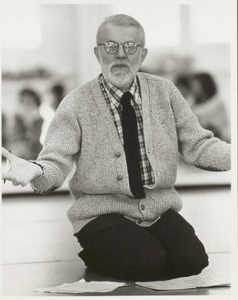
Robert Dunn was a musician who played piano for Merce Cunningham’s classes. Dunn was drawn to the radical principles of John Cage and attended his classes on composition. Eventually, he would use the concepts learned from Cage and apply them to dance in choreography workshops attended by Yvonne Rainer, Steve Paxton, and Tricia Brown, among others. Dunn encouraged them to be risk-takers by encouraging ongoing experimentation.
Judson Dance Theater
Dunn’s dance composition classes found residency at Judson Memorial Church and adopted the name of Judson Dance Theater for their dance collective. The Judson Dance Theater dancers met weekly and were given assignments, performed their choreographic works, and critiqued each other. The artists mainly used improvisation as the source for generating movement. The Judson Dance Theater eventually disbanded, and the Grand Union emerged, created by several of the Judson Dance Theater dancers and new members.
Grand Union
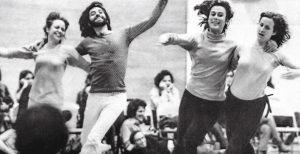
The Grand Union was a collaborative effort with all dancers contributing to the artistic process of the group. They experimented with multimedia performance art and improvisation. Their creative research encouraged artists to expand their definitions of dance to include pedestrian movement (ex: walking and running) and task-oriented movement (ex: dancers must maintain physical contact throughout the entire dance). These allowed for the participation of both trained and untrained dancers to perform. In addition, the artists sought out alternative spaces for dancing, such as warehouses and lofts. Choreographers made statements with their works rather than storytelling.
Yvonne Rainer (1934- )
Yvonne Rainer studied with Martha Graham and Merce Cunningham. Robert Dunn’s choreography workshop influenced her work as a choreographer. She was interested in the use of repetition, games, tasks, and partnering, which would become common choreographic practices employed in dance-making.
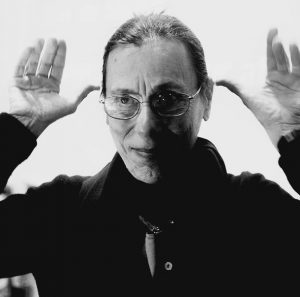
Watch This
Rainer’s Trio A, a solo dance featuring pedestrian movement.
Steve Paxton (1939- )
Steve Paxton studied and performed with Limón and Cunningham. He was inspired by the improvisation techniques explored during the Judson Dance Theater and Grand Union collaborations. Paxton developed “contact improvisation,” which has principles based on weight-sharing, touch, and movement awareness paired with pedestrian movement.
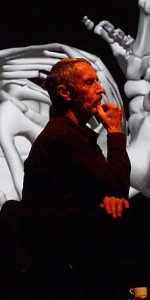
Watch This
An example of contact improvisation. The dancers maintain a point of contact and trade-off weight sharing.
Trisha Brown (1936–2017)
Trisha Brown studied with several notable teachers, including Merce Cunningham. In the early 1970s, she founded the Trisha Brown Company, engaging in “site-specific” works. These are performance spaces outside the conventional theater, such as dances on rooftops. She also explored avant-garde and postmodernist ideas to experiment with pure movement and repetitive gestures in dance.
Watch This
Brown’s “Man Walking Down the Side of a Building.”
Fourth Generation: Contemporary Modern Dance
During the mid-1970s, there was a shift back to more technical-based movements with a return to the proscenium stage. We are using the term contemporary modern to refer to this current genre.
Remember that the term modern refers to those early choreographers who broke away from Old World ballet and developed an original abstract modern point of view. After a while, these early modern choreographers codified their technique styles. At this time, modern refers to any of the choreographers who studied with or were influenced by the first- or second-generation modern dancers and are now codifying their own technique. Postmodern dance broke away from modern technique and used pedestrian movement (everyday gestures or actions such as walking, sitting, opening a door).
Contemporary dance is an expansive term meaning current, what’s happening now. It is a broader, more individualistic, expressive style of dance.
Contextual Connections
Dance Magazine’s Victoria Looseleaf helps to define the difference between contemporary and modern dance: Modern vs. Contemporary:
“Perhaps modern and contemporary genres have taken on new meanings because the global village has created a melting pot of moves, a stew of blurred forms that not only break down conventions and challenge definitions, but, in the process, create something wholly new, but as yet unnamed.”
In this article, Looseleaf went on to speak with several dance professionals about their thoughts on the topic:
- Mia Michaels, Choreographer for So You Think You Can Dance and various pop stars and dance companies, Los Angeles:
- “I’m a little responsible for So You Think You Can Dance co-opting the term ‘contemporary.’ When we first started the show, Nigel [Lythgoe] was calling it lyrical. I said, ‘It’s not lyrical, it’s contemporary.’ We’ve created a monster. Contemporary is an easy way out—it’s when you don’t know what to call it, you call it contemporary. I feel like dance is fusing all the forms and that the uniqueness of each genre is starting to be muddled. It feels regurgitated and I want it to change desperately. I’m wanting to see where these new legends and voices—like Fosse, Robbins, Graham—are going to pop up.”
- Jennifer Archibald, Founder/Director, Arch Dance, New York City:
- “Contemporary is a collection of methods that have been developed from modern and postmodern dance. It’s also a cycle of shedding techniques we’ve learned in favor of personal expression of movement. Where modern dance moved against the grain of ballet, contemporary moves against the grain of classical modern techniques. “Contemporary is not a technique; it’s a genre associated with a philosophy and exploration of different natural energies and emotions. There’s a physicality that’s appealing today, but there’s a spirituality of the contemporary movement that has been lost with the new generation in this free-for-all of different methods.”
Twyla Tharp
Twyla Tharp trained with the American Ballet Theatre, modern dance artists Martha Graham and Merce Cunningham, and Luigi and Matt Mattox jazz dance educators. Tharp began choreographing dances that blend dance genres, such as modern dance, jazz, tap, and ballet. Tharp has choreographed “more than one hundred sixty works: one hundred twenty-nine dances, twelve television specials, six Hollywood movies, four full-length ballets, four Broadway shows and two figure skating routines. She received one Tony Award, two Emmy Awards, nineteen honorary doctorates, the Vietnam Veterans of America President’s Award, the 2004 National Medal of the Arts, the 2008 Jerome Robbins Prize, and a 2008 Kennedy Center Honor.” (Bio | twyla tharp. [n.d.]. Retrieved April 27, 2022, from Twyla Tharp Dance Foundation)
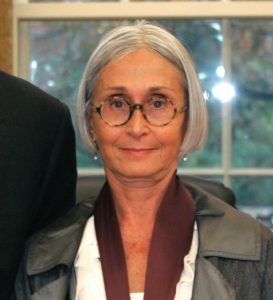
Watch This
Tharp’s Deuce Coup, dancing to music by the Beach Boys, is considered the first crossover between ballet and modern dance.
Twyla Tharp’s Famous “Eight Jelly Roll” dance from Twyla Moves, American Masters, PBS.
Garth Fagan
Garth Fagan developed the Fagan Technique, blending modern dance, Afro-Caribbean dance, and ballet. He received his training from Limón, Ailey, and Graham. Fagan has created works for notable companies like Alvin Ailey American Dance Theater and New York City Ballet.
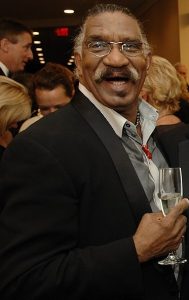
Watch This
Fagan’s “From Before,” performed by the Alvin Ailey Dance Company.
Contextual Connections
Disney’s The Lion King
Fagan is perhaps best known for his legendary work on Disney’s Broadway musical The Lion King (1997), in which he brought the animals to life by combining clever costume pieces with dance evocative of the animals in the story. In this video, you will get a glimpse of the man and his choreography.
Pilobolus
Pilobolus is a dance collective created in the late 1970s by Dartmouth college student-athletes Robby Barnett, Martha Clarke, Lee Harris, Moses Pendleton, Michael Tracey, and Jonathan Wolken, with the guidance of their teacher Alison Chase. Pilobolus branched from a choreography class experimenting with gymnastics and improvisation to create images by sculpting bodies.
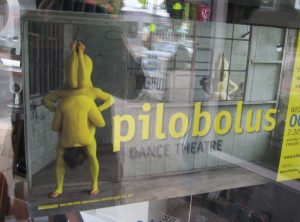
Watch This
Pilobolus perform Shadowland.
Mark Morris
In the early years of his career, Mark Morris performed with the companies of Lar Lubovitch, Hannah Kahn, Laura Dean, Eliot Feld, and the Koleda Balkan Dance Ensemble. The Mark Morris Dance Group was formed in 1980, when he was just 24. Since then Morris has created over 150 works for the company. In 1990, he founded the White Oak Dance Project with Mikhail Baryshnikov.
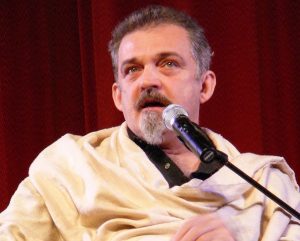
Watch This
Reporter Jeffrey Brown talks to the famed choreographer on his production of “L’Allegro” on PBS’ Great Performances.
Bill T. Jones
Bill T. Jones is known for blending controversial subjects into his modern dance choreography. Bill T. Jones and his life partner, Arnie Zane, founded the Bill. T. Jones / Arnie Zane Company in the early 1980s. Their creative works explored LGBTQIA+ themes of identity and racial tensions. Following the death of Zane, who succumbed to AIDS, Jones continued their work with the company. Bill T. Jones uses his platform as socio-political activism using dance, autobiographical elements with narrative, and theatrical components.
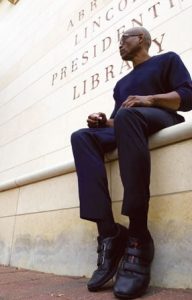
Watch This
An excerpt from D-Man in the Waters performed by the Alvin Ailey American Dance Theater. D-Man in the Waters is a political response to the AIDS epidemic honoring those who have succumbed to the disease.
His piece What Problem?, in which Bill T. Jones explores current events and questions of racism, equality, brutality, and change.
Jawole Willa Jo Zollar
In the early 1980s, Jawole Willa Jo Zollar founded Urban Bush Women. Her training began with the Dunham Technique and studying various African diaspora dance forms. Urban Bush Women started as an all-women group and predominantly centered their work from women’s perspectives; however, the company has included male dancers. The mission of Urban Bush Women is to raise the voices of people of color to advocate for social change addressing issues of race and gender inequalities. Jawole Willa Jo Zollar blends personal testimonies from the company members to create narratives (text) combined with African and contemporary dance forms.
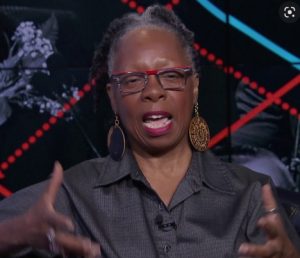
Watch This
“Hair and Other Stories,” exploring body image, gender identity, and race through conversations about hair care.
Lorenzo “Rennie” Harris
Lorenzo “Rennie” Harris brings hip-hop to the concert stage, often telling stories of the human condition. In 1992, Harris founded his company, Puremovement, located in Philadelphia, in an effort to preserve hip-hop culture. Harris has choreographed contemporary dance works for modern companies, like the Alvin Ailey American Dance Theatre. His works will be further discussed in Chapter 7.

Watch This
The Alvin Ailey American Dance Theatre perform an excerpt from Harris’ Exodus.
Robert Battle
Robert Battle is the current Artistic Director of the Alvin Ailey American Dance Theater. He was a choreographer for the Ailey company. A graduate of Juilliard, he joined the Parsons Dance Company and founded his own company, Battleworks Dance. Battle has received numerous prestigious awards, such as being honored in 2005 by the Kennedy Center for the Performing Arts as one of the “Masters of African-American Choreography.”
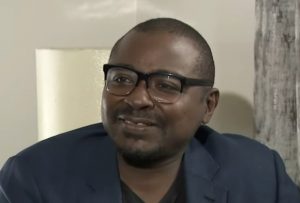
Watch This
Takademe choreographed in 1999.
Sean Dorsey
Sean Dorsey is a transgender and queer choreographer. Dorsey founded the Sean Dorsey Dance Company based in San Francisco, centering his work on LGBTQIA+ themes. In 2002, Dorsey established Fresh Meat Production, a non-profit organization that advocates for equity in gender-nonconforming communities through commissions of new dances and community engagement programs.
Watch This
An excerpt of Boys in Trouble, a social commentary on the rigid ideas of gender and masculinity.
AXIS Dance
In the late 1980s, AXIS Dance was co-founded by Thais Mazur, Bonnie Lewkowicz, and Judith Smith. AXIS dance is one of the first dance companies to create inclusive spaces for dancers of all physical abilities. Through collaborative efforts, the company developed dance known as physically integrated dance, which aims to broaden the idea of dance and who a dancer is through movement that respects a “wide spectrum of physical attributes and disabilities” (Axis dance company. [2022]. In Wikipedia).
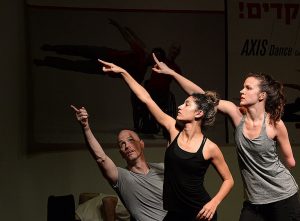
Watch This
AXIS Dance’s rehearsal process, featuring commentary by Artistic Director Marc Brew.
Camille A. Brown
Camille A. Brown blends African dance, social dances with vernacular jazz dance forms. In 2006, she founded Camille A. Brown & Dancers with choreographic works speaking to issues of race, culture, and identity. Brown’s creative works have been commissioned for renowned companies such as the Alvin Ailey Dance Theater.
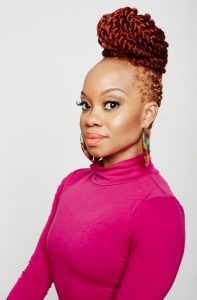
Watch This
New Second Line, inspired by the events of Hurricane Katrina in 2005. A celebration of the culture of New Orleans and the perseverance of Black people in the midst of devastation.
Victor Quijada
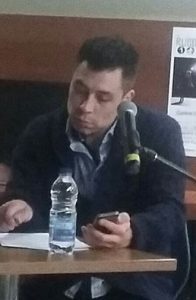
Victor Quijada is a Mexican-American contemporary choreographer from Los Angeles, CA. He began as a B-Boy and further expanded his dance background as a student at the Los Angeles County High School for the Arts, where he was introduced to modern dance and ballet. In 2002, Victor Quijada founded RUBBERBAND blending hip-hop ideology with various dance forms and theatrical elements.
Watch This
Victor Quijada’s RUBBERBAND, blending hip-hop ideology with various dance forms and theatrical elements.
Louisiana Connection
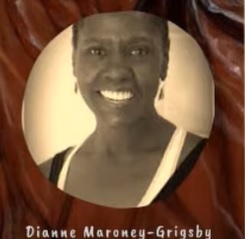
Dianne Maroney-Grigsby performed with the Alvin Ailey American Dance Theater for several years. She also served as the company’s assistant artistic director and taught full-time at the Alvin Ailey American Dance Center. Maroney-Grigsby later took the position of Artistic Director of Grambling State University’s Orchesis Dance Company. During her career, she has taught at Louisiana Dance Foundation’s Summer Dance Festivals, where she has choreographed for their resident dance company, Louisiana Dance Theatre (LDT). Some of her most noted works include “I Won’t Let Go of My Faith” and “World Hunger.”
Contextual Connections: Other Notable Contemporary Modern Artists
- Dallas Black Theatre, based in Texas, was founded in 1976 by Ann Williams, dedicated to producing contemporary modern dance works that use a blend of modern, ballet, and jazz dance styles.
- Dayton Contemporary Dance Company, based in Utah, was founded in 1968 with the intent to raise more opportunities for people of color, with dances speaking to the African American experience.
- Cleo Parker Robinson Dance, located in Colorado, is considered a cultural ambassador for their work speaking to social injustices rooted in the African diaspora.
- Doug Varone and Dancers was founded in 1986 and is based in New York, with choreographic works that are musically driven.
- Stephen Petronio Company was founded in 1984 and is located in New York. The company aims to preserve the postmodern dance lineage.
- Ohad Naharin is the artistic director of the Israeli Batsheva Dance Company and creator of Gaga, a movement language responding to one’s internal sensations.
- Shen Wei is a Chinese-American choreographer and founder of Shen Wei Dance Arts, a company using Western and Asian aesthetics, including dance, multimedia, and art.
- Akram Khan is an English choreographer that blends contemporary dance with Kathak, a traditional Indian dance.
- Crystal Pite founded Kidd Pivot in 2002, intertwining contemporary dance and storytelling with theatrical elements.
- Kyle Abraham founded his company in 2006, called A.I.M. (formally known as Abraham.In.Motion), blending ballet with other dance forms, like modern dance and hip-hop, to speak to the human condition.
- Mia Michaels is primarily known for her choreography featured on So You Think You Can Dance. In 1997, Michaels founded the company RAW (Reality at Work), choreographing contemporary and jazz dance styles.
Modern Dance Timeline
Summary
Modern dance emerged as a contrast or rejection of the rigid constraints of ballet. From individual free expressions to contemporary modern dance, just like its beginnings, modern dance is forever changing. Today, combining unifying elements of other genres of dance (African, ballet, jazz, hip-hop), modern dance is interested in the communication of emotional experiences through basic and uninhibited movement. Currently, through all of its variations, it has become whatever the choreographer would like it to be according to the artist’s background, teachings, technique, style, and imagination. Because it is so personal and individualistic, this art form will remain popular and viable for years to come.
Check Your Understanding
Directions: Using the Elements of Dance, select a ballet video from Chapter 2 and a modern dance video from Chapter 3. Compare and contrast its important qualities to reflect the aesthetic values placed on ballet and modern dance (minimum 150 words).
Directions: Select two videos from Chapter 4. Answer the following prompts (minimum 150 words):
- Using the Elements of Dance, compare and contrast both videos’ important qualities to reflect the aesthetic values placed by the modern dance choreographers.
- Reflect on how the dance reflects the time it was choreographed and how the time influenced the dance.
Modern Dance Quiz 1:
Modern Dance Quiz 2:
References
Humphrey, Doris, and Barbara Pollack. The Art of Making Dances. London: Dance Books, 1997.
Loring, Dawn Davis, and Julie L. Pentz. Dance Appreciation. Champaign, IL: Human Kinetics, 2022.
Lihs, Harriet R. Appreciating Dance a Guide to the World’s Liveliest Art. Princeton Book Company, 2018.
About Us.” Alvin Ailey American Dance Theater. Accessed August 1, 2021. https://www.alvinailey.org/about-us.
e_flux, and PlutoCross. “Yvonne Rainer, ‘No Manifesto.’” e, April 24, 2015. https://conversations.e-flux.com/t/yvonne-rainer-no-manifesto/1454.
“Axis Dance Company.” Wikipedia. Wikimedia Foundation, March 3, 2022. https://en.wikipedia.org/wiki/AXIS_Dance_Company.
Neal, Nelson. “Hemsley Winfield (1907–1934).” Black Past, April 21, 2022. https://www.blackpast.org/african-american-history/people-african-american-history/hemsley-winfield-1907–1934/.
“Edna Guy.” Wikipedia. Wikimedia Foundation, June 23, 2022. https://en.wikipedia.org/wiki/Edna_Guy.
“Bio.” Twyla Tharp. Accessed July 12, 2022. https://www.twylatharp.org/bio.
“Pearl Primus.” Wikipedia. Wikimedia Foundation, December 3, 2021. https://en.wikipedia.org/wiki/Pearl_Primus#:~:text=In%201979%2C%20she%20and%20her,modern%20dance%20and%20ballet%20techniques.
Mennenga, Lacinda. “Pearl Primus (1919–1994).” Black Past, February 6, 2020. https://www.blackpast.org/african-american-history/primus-pearl-1919-1994/.
“Talley Beatty.” Alvin Ailey American Dance Theater, October 7, 2020. https://www.alvinailey.org/talley-beatty.
“Great performances: Free to Dance – Biographies – Talley Beatty.” Accessed July 12, 2022. https://www.thirteen.org/freetodance/biographies/beatty.html.
“Donald McKayle Endowment for Modern Dance.” Donald McKayle Endowment for Modern Dance | Claire Trevor School of the Arts | UC Irvine. Accessed July 12, 2022. https://www.arts.uci.edu/mckayle.
Arnold, Tisha. “‘The Choreographer’s Last Dance’ Performance to Honor Dianne Maroney-Grigsby.” Grambling State University News, April 22, 2022. https://www.gram.edu/news/index.php/2022/04/22/the-choreographers-last-dance-performance-to-honor-dianne-maroney-grigsby/.
is the process of surrendering to gravity and returning to equilibrium, a technique originated by Doris Humphrey.
refers to movements performed on the floor. It is often used in Modern dance technique.
is a technique developed by Martha Graham to show movement that initiates by tightening the body's core muscles followed by a release of tension.
uses basic movement (everyday gestures or actions such as walking, sitting, opening a door).
developed by Steve Paxton, is based on weight-sharing, touch, and movement awareness often paired with pedestrian movement.
dance is an expansive term meaning current, what’s happening now. It is a broader, more individualistic, expressive style of dance.
uses basic movement (everyday gestures or actions such as walking, sitting, opening a door).

